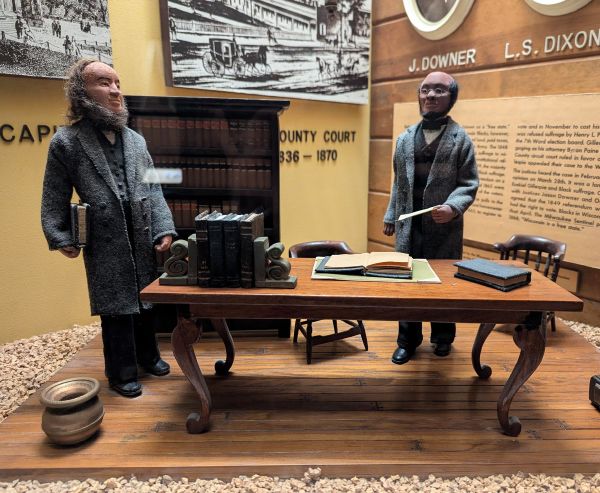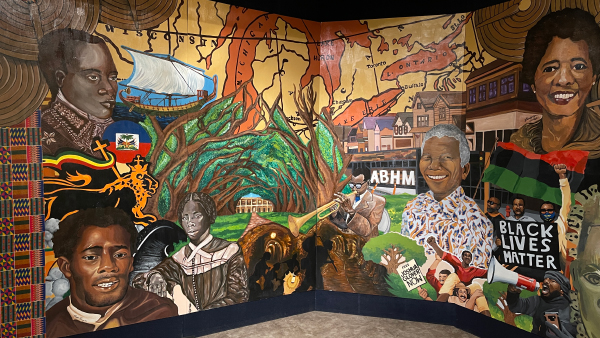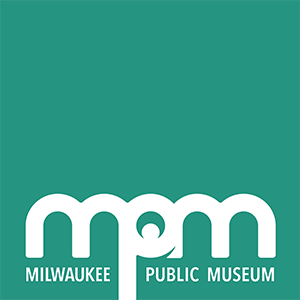Explore the experiences and contributions of Black Americans throughout different periods of U.S. history by visiting Milwaukee Public Museum's exhibits, engaging in learning opportunities with MPM’s Educators, and exploring additional online resources.
Exhibits & Collections
The Watson Family
Sully and Susanna Watson took their family from the oppressive conditions of antebellum Virginia in 1834 and, after several years in Ohio, arrived in Milwaukee in 1850. Through skilled labor and business entrepreneurship, the couple played a vital role in establishing Milwaukee's Black middle class.
The Watson family photos and papers came into MPM's collections in 1992, and the Museum added the Watson Family Home into the Streets of Old Milwaukee in 2000.
Ezekiel Gillespie

In 1865, Ezekiel Gillespie, a Black voting rights leader in Milwaukee, attempted to register to vote under the provisions of the 1848 Wisconsin constitution. Local election inspectors denied him. With the help of attorney Byron Paine, Gillespie sues and takes his case to the Wisconsin Supreme Court. He wins unanimously under the provisions of the 1849 referendum.
This mini diorama of Ezekiel Gillespie in Streets of Old Milwaukee was actually installed in 1976 by a contracted sculptor named Edgar Jerome Jeter. He was a Milwaukee native and served in the Air Force from 1951 until 1953. After MPM, he worked as an installer at the Art Museum and created a public sculpture for Madison in 1987.
Mural of African History

Designed and created by eight students at the Milwaukee Institute of Art & Design, a mural at the entrance of MPM's Africa gallery depicts prominent people, places, events, and symbols in African history. It explores various themes, from the connection between nature and African cultures to the trajectory of Africans to the Americas pre-and-post-Atlantic Slave Trade, to Milwaukee's modern era. Each of the four panels of the mural encapsulates 100 years of history.
WPA Milwaukee Handicraft Project Collection Items
This is the inspiring story of a work program that brought fame to Milwaukee while breaking gender and racial barriers during the Great Depression, told through MPM's collection of toys, textiles, books, and photographs.
The Milwaukee Handicraft Project (MHP), a Works Progress Administration (WPA) program operating from 1935 until 1942, employed more than 5,000 women and racial minorities. The Museum's large collection reflects the ingenuity and skillful craftsmanship of MHP products. The story behind their design and creation is an uplifting tale of empowerment during a difficult period for all Americans.
Additional Resources
Histories of Jim Crow and Apartheid
This panel discussion moderated by Dr. Robert Smith of America's Black Holocaust Museum explores policy and racial justice movements in the U.S. and South Africa and considers the differences and similarities between Jim Crow and Apartheid.
African Peoples Before Captivity (Virtual Exhibit)
Americans often speak of the huge and diverse continent of Africa as if it were a single country. In fact, like Europeans of the same era, Africans created great civilizations that made early, important, lasting contributions to world culture. The exhibits in this gallery aim to dispel myths about African history and present some of these contributions to readers.
Risking Everything: The Fight for Black Voting Rights (Virtual Exhibit)
This gallery revisits the history of the fight for Black voting rights, leading up to Freedom Summer of 1964; details the events of Freedom Summer, including the fight for voting rights, as well as creation of Freedom Schools and a new political party in Mississippi; connects the fight for voting rights to Milwaukee and Wisconsin, where America’s Black Holocaust Museum (ABHM) and the Wisconsin Black Historical Society & Museum (WBHSM) are located; and concludes with a discussion of the fight for voting rights today, which is connected to this long and inspiring history.
ABHM Book Club Discussion Guides
America’s Black Holocaust Museum’s founder Dr. James Cameron was an avid reader and inspiring writer and educator. To this day, he is the only known survivor of a lynching to write and publish a memoir about such an experience. In his honor, we created this book club in November of 2020 to bring together a community of all backgrounds to learn about and discuss our collective past, modern manifestations of racism, and how we create racial repair, reconciliation, and healing for a better future. This page lists all the past book club selections and the accompanying guides created for discussion.
Forest Home Cemetery Tour
This intriguing digital tour celebrates and details the lives of notable Black citizens interred at Forest Home Cemetery. By partnering with America’s Black Holocaust Museum (ABHM), the cemetery offers an enriching experience that combines digital resources and a scenic walking tour, which can be accessed right on your phone for free!


 Join us for a special collaboration with Museum docents, or “griots,” from America’s Black Holocaust Museum! These 50-minute tours will highlight African and African American history throughout MPM’s exhibit galleries.
Join us for a special collaboration with Museum docents, or “griots,” from America’s Black Holocaust Museum! These 50-minute tours will highlight African and African American history throughout MPM’s exhibit galleries.